Procedural analgesia in newborns from the viewpoint of professionals
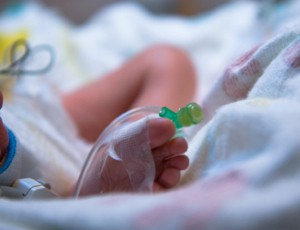
To identify the procedures considered painful and stressful by health professionals from a neonatal intensive care unit and check the measures of analgesia” Moraes and Freire (2019). Abstract: OBJECTIVE: To identify the procedures considered painful and stressful by health professionals from a neonatal intensive care unit and check the measures of analgesia. METHOD: Descriptive exploratory […]
Cost analysis of ultrasound-guided umbilical venous catheterisation

This study compared the cost-effectiveness of ultrasound-guided umbilical venous catheterisation with conventional catheterisation in a neonatal intensive care unit of a Public University Hospital” Guzmán-de la Garza et al (2019). Abstract: INTRODUCTION: Although the use of ultrasound for the insertion of central catheters has proven to be cost-effective in adults, it is not known if […]
Antibiotic-impregnated central venous catheters in the neonatal intensive care unit
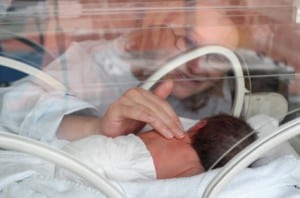
It is often unclear what proportion of an improvement is attributable to each element of these care bundles and, as such, a single intervention such as antibiotic impregnation of CVCs might have too small an effect to be demonstrable” Khatami and Isaacs (2019). Extract: As Gilbert and colleagues point out,5 other infection prevention strategies in […]
Study demonstrates significant decrease in neonatal CLABSI
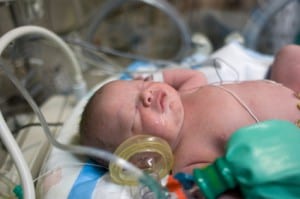
Although there was a significant decrease in CLABSIs and non-CLABSIs, hospital-acquired infections in preterm neonates remained high” Zipursky et al (2019). Abstract: OBJECTIVE: To determine if the reported reduction in hospital-acquired infections is due to reduced central line-associated blood stream infections (CLABSI) or non-CLABSIs. STUDY DESIGN: A retrospective cohort study design was used to describe […]
Parenteral nutrition and oxidant stress in the newborn

There is strong evidence that oxidant molecules from various sources contaminate solutions of parenteral nutrition following interactions between the mixture of nutrients and some of the environmental conditions encountered in clinical practice” Lavoie and Chessex (2019). Abstract: There is strong evidence that oxidant molecules from various sources contaminate solutions of parenteral nutrition following interactions between […]
Contribution of red blood cell transfusion to neonatal morbidity and mortality
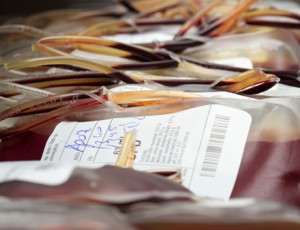
Anaemia of prematurity will affect 90% of all very preterm infants, resulting in at least one red blood cell (RBC) transfusion. A significant proportion of preterm infants require multiple transfusions over the course of hospital admission” Crawford et al (2019). Abstract: Anaemia of prematurity will affect 90% of all very preterm infants, resulting in at […]
Efficacy of vein visualisation devices for neonatal vascular access

The aim of this randomized controlled trial was to examine the efficacy of vein visualization devices and the routine method for insertion of peripheral intravenous catheters (PIVCs) in preterm infants” Çağlar et al (2019). Abstract: The aim of this randomized controlled trial was to examine the efficacy of vein visualization devices and the routine method […]
Accuracy and safety of intracavitary ECG guidance for neonatal PICC placement

The purpose of this study is to investigate the accuracy and safety of intracavitary electrocardiogram (IC-ECG) guidance for the localization of peripherally inserted central catheter (PICC) in neonatal patients” Ling et al (2019). Abstract: The purpose of this study is to investigate the accuracy and safety of intracavitary electrocardiogram (IC-ECG) guidance for the localization of […]
Effect of early parenteral nutrition discontinuation in neonates
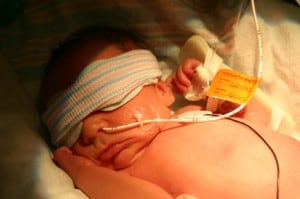
In VLBW infants, early PICC removal at an enteral feed volume of 100 mL/kg/day compared with later removal at 140 mL/kg/day resulted in a significant delay in time to regain birth weight” Perrem et al (2019). Abstract: BACKGROUND: Peripherally inserted central catheters (PICCs) are used to administer parenteral nutrition (PN) in very low birth weight […]
Impact of a dedicated nursing team on central line-related complications

To evaluate the impact of a dedicated nursing team on central line insertion success and catheter-related complications” Levit et al (2019). Abstract: Aim: To evaluate the impact of a dedicated nursing team on central line insertion success and catheter-related complications. Methods: Five nurses were trained in central line insertion and maintenance practices and replaced a […]
Early detection and prompt treatment of infiltration and extravasation

The potential complications of infiltration and extravasation are common in this population. Consequences of infiltration and extravasation may be prevented or mitigated by early detection and prompt treatment” Desarno et al (2018). Abstract: The vast majority of infants in the NICU receive peripheral intravenous (PIV) therapy for administration of fluids, nutrition, medications, and blood products. […]
Umbilical cord simulator model for emergency umbilical catheter placement training
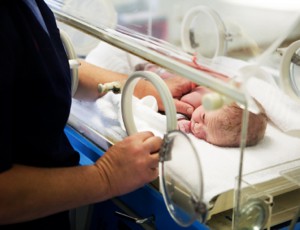
This technical report describes the creation and use of a real human umbilical cord simulator model for emergency umbilical venous catheter placement training” Sawyer et al (2018). Abstract: Emergency umbilical venous catheter placement is a critical procedure during newborn resuscitation. Providing training in this high-acuity and low-frequency procedure is important to optimize the skills of […]
Transjugular retrieval of a knotted peripherally inserted central venous catheter

Knotting of intravascular catheters has been well described, and all such cases documented in the literature have occurred during catheter insertion” Zhou et al (2018). Abstract: Knotting of intravascular catheters has been well described, and all such cases documented in the literature have occurred during catheter insertion. Knot formation has not been reported during the […]
Ultrasound use in neonatal peripheral intravenous extravasation injuries

The primary aim of this study was to examine and describe peripheral intravenous extravasation (PIVE) injuries using point-of-care ultrasound (POC-US). A secondary aim was to define skin tissue changes before and after hyaluronidase application using POC-US” Boyar et al (2018). Abstract: PURPOSE: The primary aim of this study was to examine and describe peripheral intravenous […]
Point of care ultrasound in localizing central venous line tip position
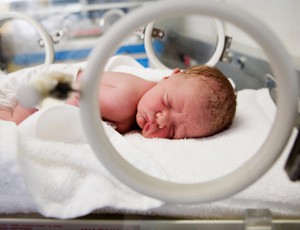
The primary objective was to study agreement between X-rays and point of care ultrasound (POC-US) in determining central venous line (CVL) tip position” Zaghloul et al (2018). Abstract: The primary objective was to study agreement between X-rays and point of care ultrasound (POC-US) in determining central venous line (CVL) tip position. The secondary objective was […]
Example of total parenteral nutrition ascites secondary to vessel perforation

One of the uncommon complications reported is total parenteral nutrition (TPN) ascites secondary to vessel perforation or hepatic erosion by the tip of the catheter due to malposition of a UVC” Pegu and Murthy (2018). Abstract: The ease of access and advantages of a secure central line makes use of umbilical venous catheter (UVC) and […]
CLABSI rates following the introduction of a central line bundle

In this report, rates of CLABSI and central line utilisation were examined following the introduction of a central line bundle in our Neonatal Intensive Care Unit (NICU) at the Canberra Hospital” Bannatyne et al (2018). Abstract: BACKGROUND: Central Line Associated Bloodstream Infections (CLABSI) constitute a leading cause of morbidity and mortality in neonatal populations. There […]
Training for ultrasound-guided vascular access to small vessels in neonates

Critically ill neonatal and pediatric patients often require central vascular access. Real-time ultrasound guidance for central venous catheterization is beneficial. Because the diameter of central veins is much smaller in neonates than in adults, extensive training is needed to master the visualization and catheterization of central veins in neonates” Wagner et al (2018). Abstract: OBJECTIVES: […]
Impact of chlorhexidine gluconate bathing on skin bacterial burden of neonates

CHG bathing reduces skin bacterial burden, but burden returns to baseline after 72 h” Johnson et al (2018) Abstract: OBJECTIVE: To assess the impact of chlorhexidine gluconate (CHG) bathing on skin bacterial burden in neonates. STUDY DESIGN: In this prospective observational study, arm and groin skin bacterial growth was measured in 40 CHG-exposed and nonexposed neonates […]
Neonatal PICC placement complicated by neonatal lymphedema
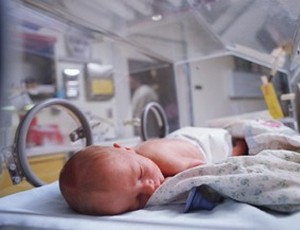
Percutaneous intravenous central catheter (PICC) complications are not common and generalized edema and anasarca in neonates as a complication of PICC malposition is even rarer” Kylat et al (2017). Abstract: Percutaneous intravenous central catheter (PICC) complications are not common and generalized edema and anasarca in neonates as a complication of PICC malposition is even rarer. […]
Elective replacement of intravenous cannula in neonates-a randomised trial

The reported incidence of extravasation injury is as high as 70% in the neonatal and paediatric population and has an association with cannula dwell time” Chin et al (2018). Abstract: Peripheral intravenous cannula (PIVC) insertion is one of the most common invasive procedures performed in neonates and is frequently associated with adverse events. There are […]
Treatment of severe extravasation injuries in preterm neonates

Extravasation injuries occur in 18% to 33%, with 70% in neonates < 27 weeks of gestational age. Despite such frequent use of PIV therapy, evidence on best practice, injury prevention, management, and treatment of extravasations is lacking” Boyar and Galiczewski (2018). Abstract: INTRODUCTION: A peripheral intravenous (PIV) catheter is placed in 60% to 70% of […]
Vancomycin-induced red man syndrome presentation in a preterm infant

Given the wide use of vancomycin for the treatment of neonatal infections, a good awareness of red man syndrome signs and symptoms in the neonatal population is fundamental to recognize this adverse drug reaction and manage its rare but possible life-threatening complications” Martini et al (2018). Abstract: A male infant born at 32 weeks’ gestation […]
Peripheral parenteral nutrition osmolality algorithm

Osmotic stress is a physical risk factor for adverse events related to peripheral parenteral nutrition (PN) administration, such as infiltration. We sought to improve prediction of compounded PN osmolality utilizing basic nutrient solutions available to North American neonatal intensive care units” Borenstein et al (2018). Abstract: BACKGROUND: Osmotic stress is a physical risk factor for […]
PICC placement in medical-surgical neonatal intensive care units

To compare outcomes of peripherally inserted central catheters (PICCs) placed in the upper extremity (UE) versus the lower extremity (LE) in a quaternary medical-surgical neonatal intensive care unit (NICU)” Elmekkawi et al (2018). Abstract: OBJECTIVE: To compare outcomes of peripherally inserted central catheters (PICCs) placed in the upper extremity (UE) versus the lower extremity (LE) […]
Umbilical catheter-related complications identified with ultrasound

This pictorial review illustrates the sonographic findings of complications that should be excluded in the sick neonate with an indwelling catheter” Selvam et al (2018). Abstract: Umbilical catheters are commonly used in the neonatal period for blood sampling or for administering medication or parenteral nutrition. The position of the catheter is usually confirmed with radiography. […]
Neonatal pain control with sucrose or skin to skin care

To compare the efficacy of SSC with oral Sucrose for pain management in preterm neonates” Shukla et al (2018). Abstract: Objective: To compare the efficacy of SSC with oral Sucrose for pain management in preterm neonates. Methodology: Parallel-group, assessor-blinded randomized control trial conducted from February-June 2017 at a level 3B-NICU. Hundred preterm neonates (29-0/7 to […]

